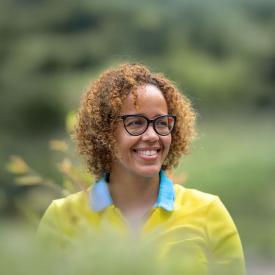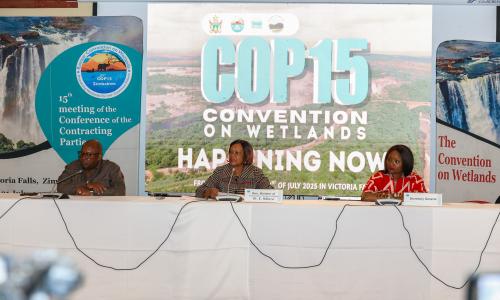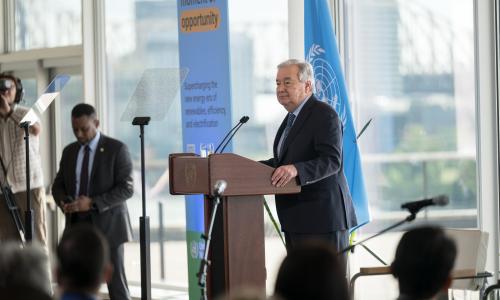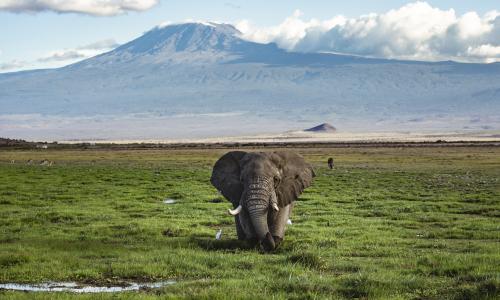More than 80% of Cabo Verde’s exports come from the fisheries sector, making its sustainable development a national priority. The country is transitioning from a maritime economy—focused mainly on fishing—to a blue economy that integrates biodiversity, seaweed cultivation, research, and livelihoods. This shift emphasizes ecosystem health, inclusive growth, and long-term food security. UN support, including through FAO, plays a key role in strengthening legislation, improving data systems, and developing value chains for key species like tuna and mackerel.
In this conversation, Katya Neves, FAO Assistant Programme in Cabo Verde discusses the transition to a blue economy, FAO’s longstanding presence in Cabo Verde, sustainable fisheries management, support to women and youth, value chain development, and the importance of inclusive and ecosystem-based approaches to ocean governance.
Can you walk us through some of the key initiatives the UN has been actively involved in recently?
Katia Neves: I will start with the SDG Fund joint program that we implemented and ended in September. It is a joint project implemented by UNDP, IOM, FAO, and UNIDO. It has two main components. The objective was to connect the blue economy actors to improve the value chain as well. An initiative was launched with the support of UNDP to mobilize investments from the diaspora and other areas. And it was very successful. The Blue-X initiative was able to raise more than 14 million euros.
FAO and UNIDO came in with technical assistance and capacity, supporting the beneficiaries of the initiative to help them with their business plans and help them become better structured.
Now (as of December 2024), we have 50 business plans, and 90% of them are women-led.
We are now supporting them in how to connect with investment opportunities and funding that is available. Some of that funding will surely come from the amount raised through the Blue-X platform. It’s also possible that through the stock exchange, we can establish mechanisms involving microfinance institutions and others so that they can reach those in need in vulnerable communities.
Those business ideas, were they sensible plans? Are they being implemented?
They are. At the moment, they are still in the planning phase. For instance, a cooperative has been established, and they have a boat that has been rehabilitated and is ready to be put in the sea. It’s run by the Association of Fishermen and Parents in the Ribeira da Barca community.
There have also been discussions with ProEmpresa—a public institution that promotes micro-entrepreneurship—and with one of the commercial banks in Cabo Verde. We are working to connect them. These business plans are viable investments.
We are linking them with existing investment opportunities. We are confident that most of them can be funded, and they will receive technical assistance through ProEmpresa. The groundwork has been laid—they now just need to be taken further and formalized.
Is this meant to be just a one-off activity, or is it going to be like a pilot project?
The boat was identified by the community as a priority. It's run by the association. Other associations may also have the same needs and require boats. Normally, such an investment would be private. This one is different—it's a pilot for the market.
The association already has previous experience, but the boat needed rehabilitation. Now, it’s a pilot project that will show how such a model could work.
Already, the association has been in contact with the school feeding program. Some of the fish they catch will be channeled to the program in Ribeira da Barca. This will benefit their own children, especially those in the primary years, up to the eighth grade.
This model can, of course, be replicated. For example, a cooperative could manage a semi-industrial or larger boat that can ensure more safety for the workers and travel longer distances. This is increasingly important, especially since climate change is affecting the fish stocks.
We are talking about migratory species. Our fishermen’s communities must be well-equipped with safe and capable boats so they can access better fishing grounds and improve their yields.
Another program FAO leads is the ecosystem approach for fisheries, run by the Nansen Programme and financed by Norway. In addition, we have the Coastal Fisheries Initiative (CFI), which operates globally and regionally. Through it, we worked on legislation to support the country in developing legal frameworks for artisanal fishing. We also worked with women fishers and fishmongers to improve hygiene practices and supported them in setting up small businesses.
Now, regarding the boat—it was refurbished, and the engine was provided by UNIDO. So, you see that everyone is involved—UNDP, IOM, UNIDO, FAO. But also, WFP for the school feeding program, UNICEF for the nutrition component, UN-Habitat in support of the blue economy, and the World Bank, which helped implement the Blue Economy Investment Plan developed with FAO’s technical support.
Joint work brings together our different comparative advantages. We have specific technical capacities in several areas, and this synergy is very valuable.
What about the challenges?
The government recognizes several of them. Key challenges include limited fishing processing infrastructure, the impacts of climate change, the need for legislative capacity building, and the lack of social protection for fishers.
But there are also opportunities. For example, there is the sea campus composed of the University of the Atlantic, IMar (the research institute), and EME (the capacity-building institute). We are also working on integrating the fishing sector into social protection schemes, taking into account the seasonal nature of fishing activities and how income is affected when fishers cannot go out to sea.
There’s also the Hand-in-Hand Initiative and the SDG Fund work, which have raised important amounts of money for priority projects.
What should fishermen and fishmongers in the field expect, going forward?
FAO has a permanent presence in Cabo Verde. Even though the SDG Fund project has ended, the agencies—FAO, UNIDO, and UNDP—remain committed to supporting these communities. We will continue coaching them and providing technical support. This is our ongoing commitment.
What about community leaders like Maria in Rincao?
People like Maria are very important. She’s strong, committed, and engaged. She can inspire others—especially women—and help spread the word. Her leadership is recognized locally, and she’s already helping other fishermen apply for funding. Maria is an example of what’s possible when there is both commitment and support.
The National Gender Strategy for Fisheries (which runs through 2026) was developed under the CFI project with FAO support. It helps make women’s roles more visible—both in terms of food security and economic contributions—and supports the development of inclusive policies in the fisheries sector.









